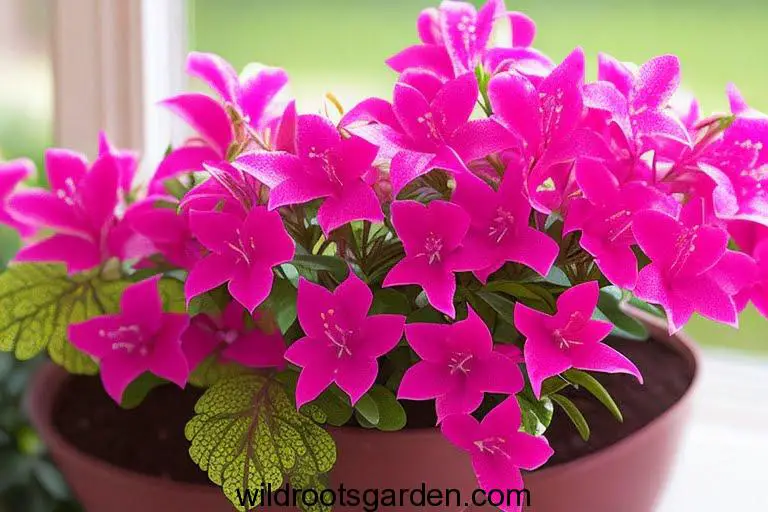If you have an indoor azalea plant that you adore, you might be wondering if it’s possible to move it outside and give it a taste of the great outdoors. With the right care and circumstances, indoor plants can survive outside. In this article, we will discuss the advantages and disadvantages of transferring your indoor azalea outside and give you important tips for a successful transition. To learn about the dos and don’ts of taking your azalea on a brief outdoor journey, let’s delve into the world of indoor and outdoor azaleas.
Azaleas grown inside are common houseplants loved for their colorful blooms and glossy foliage. To keep these delicate plants looking beautiful inside, special care is needed. Nonetheless, many people who grow plants indoors often think of taking their azaleas outside so they can experience the elements. Although it can sound exciting, there are a few things you should think about before making the switch.
Table of Contents
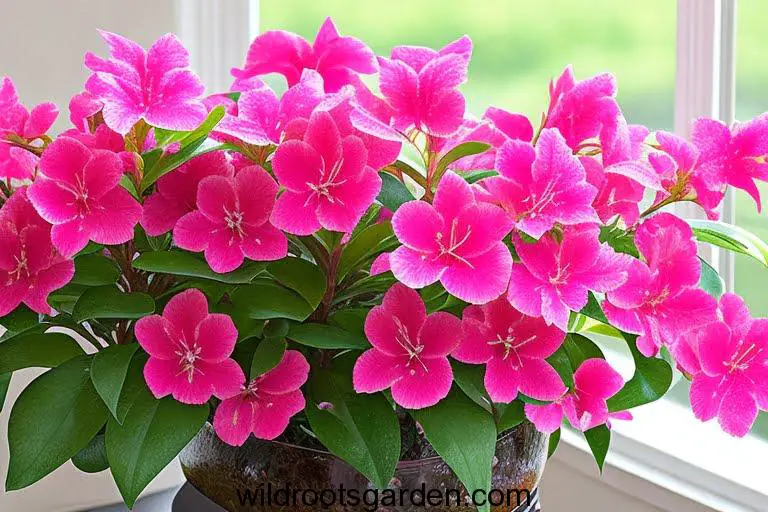
Understanding Indoor Azaleas
Rhododendron simsii, the formal name for indoor azaleas, is an East Asian native and a member of the Ericaceae family. They have gained popularity as indoor plants because of their gorgeous blossoms and compact growth patterns. To grow inside, azaleas need constant temperatures, a moderate amount of humidity, and bright, indirect light. They have a long blooming period and may turn any area into a vibrant sanctuary.
Benefits of Keeping Azaleas Indoors
It’s crucial to think about the advantages of keeping your indoor azalea within before opting to transplant it outside. With indoor azaleas, you have more control over their surroundings because you can modify the temperature, humidity, and lighting to meet their demands. Indoor plants are also protected from harsh weather, pests, and illnesses that are frequently seen in outside habitats. Also, keeping your azalea indoors allows you to enjoy its blossoms all year round.
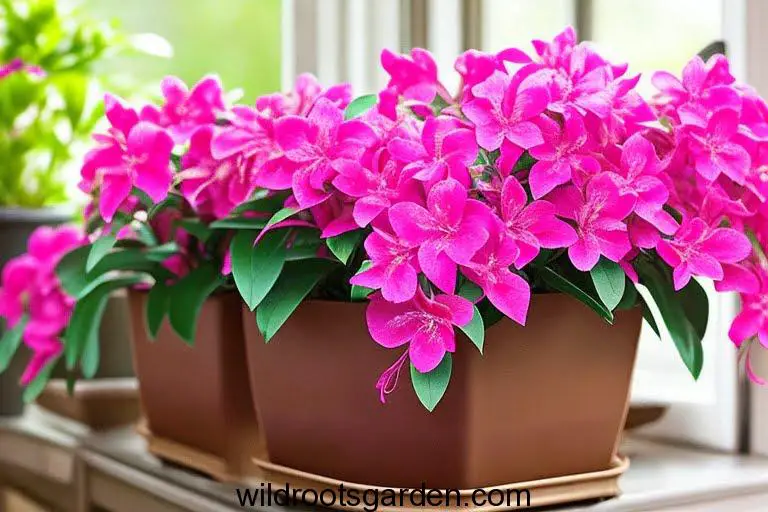
Factors to Consider Before Moving Azaleas Outdoors
Planning and thought must go into relocating an indoor azalea to an outdoor setting. Before making this decision, consider the following:
Climate: Azaleas thrive in specific climate zones. Research the hardiness zone for your area and ensure it aligns with the requirements of azaleas.
Season: Choose the right time to move your azalea outdoors. Spring or early fall, when temperatures are mild, is generally the best time for a successful transition.
Acclimation: Gradually expose your azalea to outdoor conditions by placing it in a shaded or semi-shaded area for a few hours a day. This helps prevent shock and allows the plant to adjust to new light levels.
Health and Growth: Ensure your indoor azalea is healthy, free from pests, and actively growing before considering outdoor placement. A weak or stressed plant may struggle to adapt to new conditions.
Transitioning Indoor Azaleas to Outdoor Environment
When moving your indoor azalea outside, follow these steps for a smooth transition:
Step 1: Choose the Right Location
Select a location in your outdoor space that provides adequate light, preferably with morning sun and afternoon shade. Azaleas generally prefer dappled sunlight or partial shade.
Step 2: Soil Preparation
Prepare the planting area by amending the soil with organic matter such as compost. Azaleas prefer well-draining, acidic soil with a pH level between 4.5 and 6.0.
Step 3: Digging the Hole
Dig a hole that is wider and shallower than the root ball of your azalea. Ensure the top of the root ball sits slightly above the soil surface.
Step 4: Planting the Azalea
Gently remove the azalea from its container and place it in the hole. Backfill with soil, ensuring there are no air pockets around the roots. Water thoroughly after planting.
Step 5: Mulching
Apply a layer of organic mulch around the base of the azalea, leaving a gap around the stem to prevent moisture buildup.
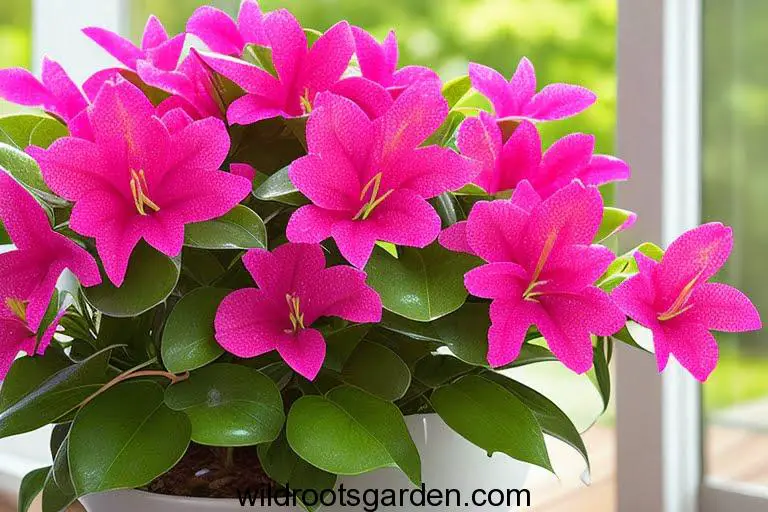
Optimal Conditions for Outdoor Azaleas
Outdoor azaleas require specific conditions to thrive:
Lighting: Azaleas prefer filtered sunlight or partial shade. Morning sun and afternoon shade are ideal.
Temperature: Most azaleas thrive in cool to moderate temperatures, ranging from 60°F to 75°F (15°C to 24°C). Protect them from freezing temperatures and hot afternoon sun.
Soil: Azaleas thrive in well-draining, acidic soil. Regularly test the soil pH and amend if necessary.
Watering: Provide consistent moisture to outdoor azaleas, ensuring the soil remains evenly moist but not waterlogged. Mulching helps retain moisture.
Caring for Outdoor Azaleas
To ensure your outdoor azalea thrives, follow these care tips:
Watering: Water regularly, especially during dry periods. Avoid overwatering or allowing the soil to become waterlogged.
Fertilizing: Apply a slow-release, acidic fertilizer specifically formulated for azaleas during the growing season. Follow the package instructions for dosage and frequency.
Pruning: Prune azaleas after blooming to maintain their shape and remove any dead or damaged branches. Avoid heavy pruning as it can impact next year’s blooms.
Mulching: Renew the mulch layer annually to help retain moisture, suppress weeds, and regulate soil temperature.
Protecting Azaleas from Harsh Weather
Azaleas are tough plants, yet they can still be subject to extreme weather. Use the following safety measures to safeguard your outdoor azaleas:
Frost Protection: Cover your azalea with a breathable fabric or place a frost cloth over it during frosty nights.
Winter Protection: In colder regions, mulch the base of the plant to protect the roots from freezing temperatures.
Heat Protection: Shield azaleas from the intense afternoon sun by providing shade during the hottest part of the day.
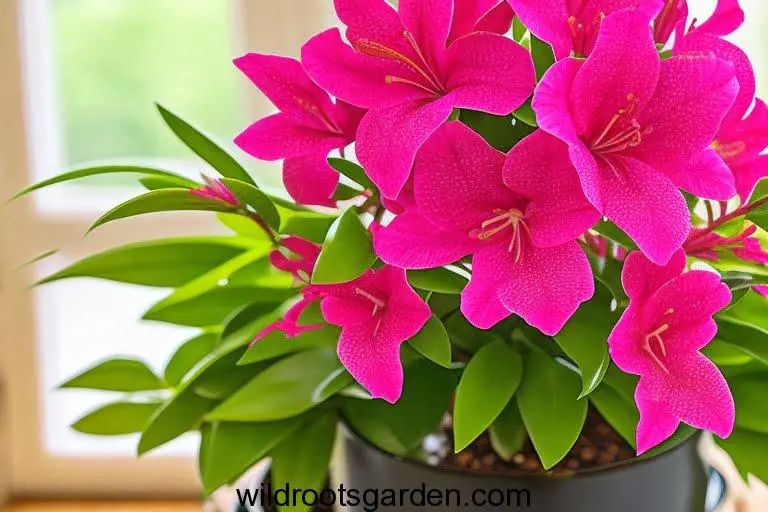
Common Issues with Outdoor Azaleas
Outdoor azaleas may encounter several problems. Here are some common issues and their solutions:
Leaf Spot: Monitor for leaf spots, which can be caused by fungal diseases. Apply a fungicide if necessary and ensure good air circulation.
Pests: Watch for common azalea pests like lace bugs, spider mites, and caterpillars. Regularly inspect the leaves and treat them with insecticidal soap or horticultural oil if needed.
Yellowing Leaves: Yellow leaves may indicate nutrient deficiencies. Adjust the soil pH and fertilize with an appropriate acidic fertilizer.
Pruning and Shaping Outdoor Azaleas
Pruning helps maintain the shape and promote the healthy growth of your outdoor azaleas. Follow these tips:
Timing: Prune after flowering but before new growth begins in late spring or early summer.
Tools: Use clean, sharp pruning shears or hand pruners. Disinfect the tools with rubbing alcohol to prevent the spread of diseases.
Method: Trim back overgrown branches, deadwood, and weak growth. Maintain a natural and balanced shape.
Pests and Diseases
Outdoor azaleas can be susceptible to various pests and diseases. Here are some common issues and their remedies:
Lace Bugs: Monitor for lace bugs and control them with insecticidal soap or neem oil. Regularly inspect the undersides of leaves for signs of infestation.
Powdery Mildew: Provide adequate air circulation and avoid overhead watering to prevent powdery mildew. Apply a fungicide if necessary.
Root Rot: Ensure proper drainage and avoid overwatering to prevent root rot. Remove and discard infected plants to prevent the spread of the disease.
Conclusion
Taking your indoor azalea outside can be exciting since it will give the plant a chance to interact with the environment and potentially thrive there. To ensure a smooth transition, it’s imperative to take into account the variables described in this article and adhere to the correct procedures. Your outdoor azalea can blossom wonderfully and develop into a gorgeous addition to your yard by receiving the ideal circumstances, care, and protection.
FAQs
Can I keep my azalea indoors all year round?
While azaleas can be grown indoors, they generally benefit from spending some time outdoors, especially during the warmer months. It’s recommended to provide them with a period of outdoor exposure for optimal growth.
How often should I water my outdoor azalea?
Watering frequency depends on various factors such as climate, soil moisture retention, and the plant’s age. As a general guideline, outdoor azaleas may require watering 2-3 times per week during dry spells.
Are azaleas prone to any specific diseases?
Azaleas can be susceptible to diseases like powdery mildew, leaf spot, and root rot. Providing proper care, including good air circulation, regular inspections, and appropriate watering practices, can help prevent these issues.
Can I grow azaleas in containers outdoors?
Yes, azaleas can be successfully grown in containers outdoors. Ensure the container has good drainage, use a well-draining potting mix, and provide appropriate light and water requirements.
How long do azalea flowers typically last?
The flowering period of azaleas can vary depending on the variety and environmental conditions. Generally, azalea flowers can last for several weeks, providing a stunning display of color during their blooming season

